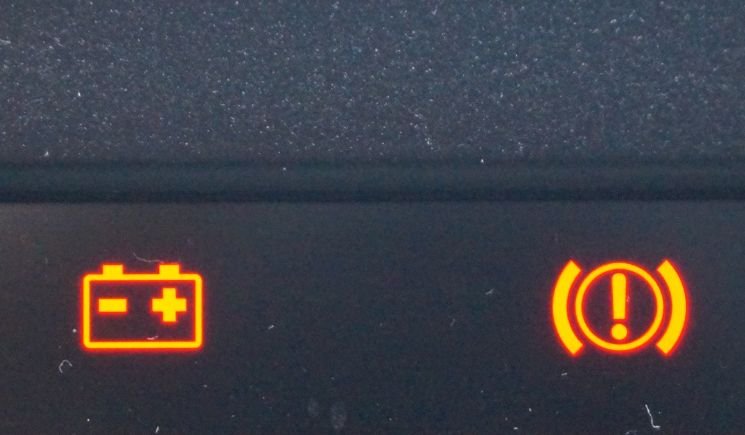Seeing your brake and battery warning lights illumination immediately after replacing your alternator can be frustrating and concerning. This common occurrence indicates improper installation or faulty components rather than a more significant electrical issue. In this article, we’ll explore the likely causes of brake and battery light activation post-alternator replacement. And the steps to switch them off again. We’ll cover effective troubleshooting to confirm proper charging system operation, from loose battery connections to faulty new alternators.
Don’t fret over those dual dashboard lights – let’s outline solutions to safely rectify battery and brake warnings after alternator installation so you can continue to drive with a fully functional charging system.
Potential Causes Of The Issue Of Brake And Battery Lights Illumination After Replacing An Alternator
Loose battery connections
- Improperly tightened or dirty battery terminal connections prevent the alternator from adequately charging the battery by triggering the warning lights due to low voltage detection.
Faulty new alternator
- The new alternator that you have might be an incredibly low-cost unit, which often fails immediately with internal component defects. This leaves the new alternator unable to charge the battery.
Alternator wiring issues
- Improper reconnection of the alternator wiring harness during installation or damaged power/ground wires can disrupt the alternator charging function.
Failed voltage regulator
- The voltage regulator within the alternator that controls charging output could malfunction on the new unit. This prevents proper battery charging.
Wrong alternator replacement
- Using the incorrect alternator replacement part number for the specific vehicle may result in charging compatibility issues from voltage/amperage mismatches.
Bad battery
- An ageing, weak battery with dead cells or plates may be unable to accept and hold a proper charge from a working new alternator replacement.
Undersized alternator
- Using too small of an alternator that cannot output sufficient amperage for the vehicle’s electrical demands can allow for battery drain by highlighting the brake and battery lights to illuminate.
Solutions For The Issues Of Brake And Battery Lights Illumination After Replacing An Alternator
- Inspect and re-secure battery connections. Also, make sure to Clean terminals and re-tighten connections to specifications.
- Use specialized alternator bench tester equipment to diagnose if a defective new alternator is causing warning lights due to the inability to charge the battery sufficiently.
- Carefully inspect that the alternator wiring harness is entirely on the spot with no malfunctioning leads.
- Confirm that the correct alternator is in your hand with the perfect voltage and amperage ratings for the specific vehicle by referencing the part numbers.
- If the battery cannot hold proper charge due to old age and cell failure, a new matching OEM spec battery that accepts charge needs to be on board with the new alternator.
- In rare cases, resetting or reprogramming the engine’s computer adaptive values may be required for proper charging system recognition and operations after major part swaps.
- Clear any codes, drive the vehicle, and retest the charging system voltages and battery draw to confirm the proper operation of new components before resuming regular use.
FAQs About Brake And Battery Light On After Replacing Alternator
Q: What should I check if my brake and battery lights are on after the repair?
A: Inspect that all electrical connections are firmly secured, the battery is connected correctly, and the wiring harness is fully seated on the alternator. Also, scan for related charging system codes.
Q: Is it possible I was sold the wrong alternator replacement by the parts store?
A: Yes, providing the wrong make/model information gets you the incorrect alternator that won’t charge properly. Compare part numbers and specs to verify matched components.
Q: If battery cables are tight, could the battery itself be causing issues with the new alternator?
A: Yes, the battery may be too out of shape with low capacity and cannot hold a charge from the new alternator by triggering the alerts.

